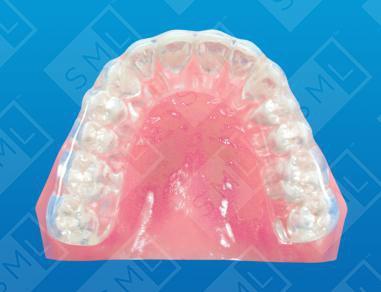Splint therapy is often the means of treatment which, initiated early, can provide your patients with the best long term care, save them money…and make you some, as well. The dentist plays a key role at three procedural levels: screening, diagnosis, and treatment.
plays a key role at three procedural levels: screening, diagnosis, and treatment.
A properly designed splint can:
- Break up doodling patterns and cover facets of wear
- Protect teeth from abnormal forces
- Protect the bony and soft tissue supportive structures against abnormal forces
- Introduce an optimum occlusal position
- Deprogram and musculature and reorganize neuromuscular reflex activity
- Encourage normal muscle function
- Alleviate any occlusal stresses and provide anterior guidance to posterior teeth
- Establish a new vertical relationship
- Protect teeth from diurnal and nocturnal bruxism
- Provide a more stable or functional joint position
- Alleviate occlusal stresses to the anterior teeth by controlling the vertical dimension
For more information on splints and other dental appliances contact SMLglobal.
Location
United States
40° 45' 21.7368" N, 94° 49' 25.266" W
See map: Google Maps




